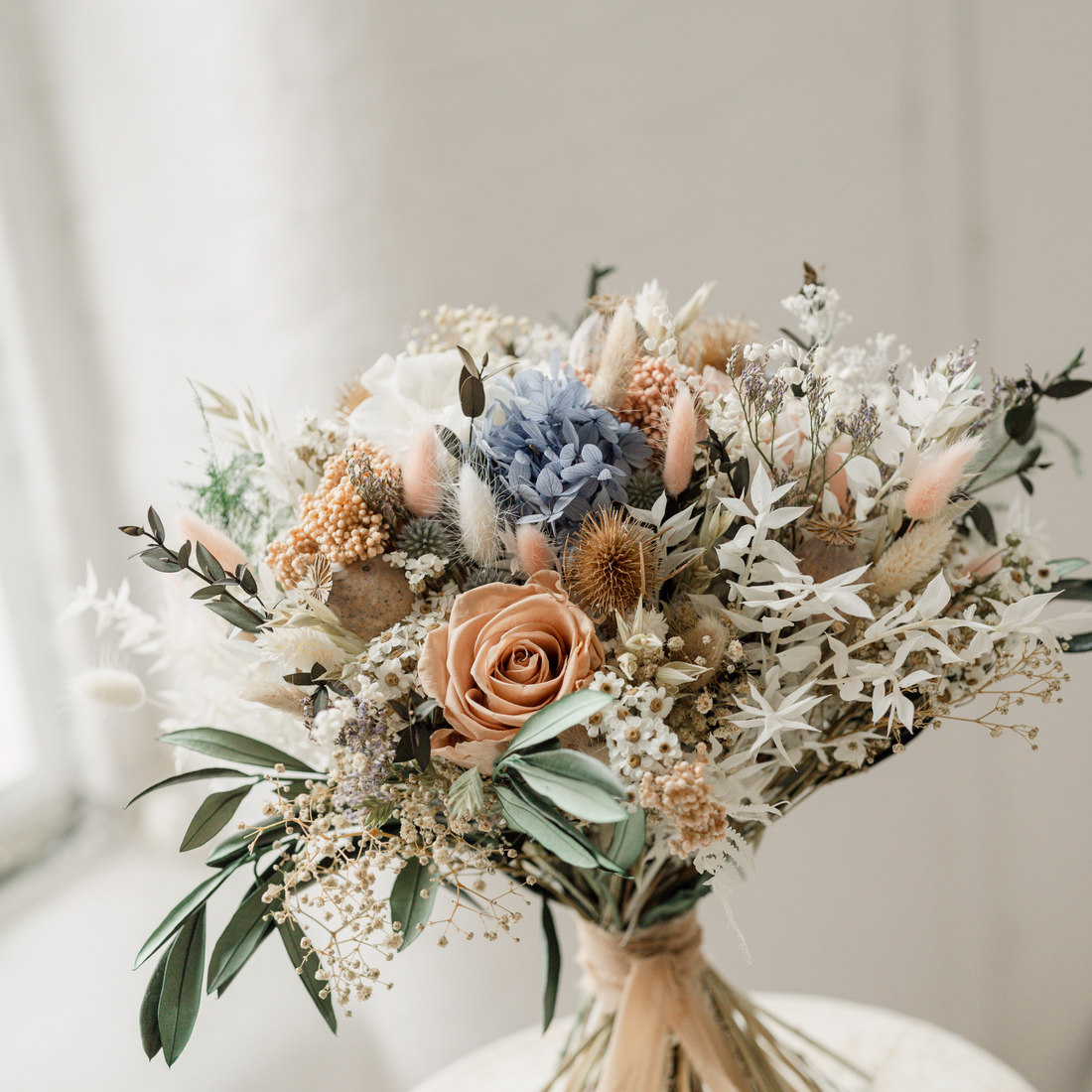One of the most common questions I get asked is, "How long will dried and preserved flowers really last?" The honest answer is that there is no definitive time frame. The longevity of dried flowers can vary significantly depending on several factors, but with the right care, they can last anywhere from several months to several years. If you want to keep your wedding flowers looking their best for as long as possible, here are some key considerations to keep in mind.
Moisture Control
Dried flowers thrive in dry conditions, which makes them perfect for indoor displays. Unlike fresh flowers, they require no watering, making them wonderfully low-maintenance. However, moisture is their biggest enemy. Avoid placing your flowers in humid environments such as bathrooms and kitchens, as excessive moisture can cause them to become limp, discoloured, or even mouldy. Instead, choose a dry, well-ventilated space like your living room or bedroom to ensure they remain in pristine condition.
Avoid Direct Sunlight
While sunlight brings out the beauty in fresh blooms, it can be damaging to dried and preserved flowers. Prolonged exposure to direct sunlight can make dried flowers brittle, increasing the likelihood of breakage. Additionally, the sun’s UV rays can cause colours to fade over time, leading to a duller appearance. To preserve the vibrancy of your flowers, display them in a shaded or indirect light setting, away from windows that receive strong sunlight.
Handle with Care
Dried flowers are delicate and should be handled as little as possible. The natural oils from your skin can affect their longevity, and frequent handling may cause petals and leaves to shed. If you need to move or adjust them, try to do so gently and hold them by their stems to minimise damage. A good tip is to place your flowers in their display spot and leave them undisturbed as much as possible.
Maintain a Stable Temperature
Temperature fluctuations can be particularly harmful to preserved flowers. Unlike naturally dried flowers, preserved flowers have been treated with special solutions to maintain their soft texture and vibrant colours. If exposed to extreme temperature changes, such as central heating in winter or air conditioning in summer, the preservatives can begin to break down, leading to discolouration or even a sticky residue forming on the petals. To prevent this, keep your flowers in a stable environment away from direct heat sources such as radiators, fireplaces, or air vents.
Choose the Right Flowers
The lifespan of dried and preserved flowers also depends on the types of blooms used. Some flowers and foliage naturally last longer than others. Preserved flowers generally have a longer lifespan than naturally dried flowers because of the treatment process they undergo. If longevity is a priority for you, we can discuss which flowers will best meet your expectations. Some hardy flowers, such as hydrangeas, roses, and eucalyptus, tend to hold up well over time, whereas more delicate or bleached varieties may fade, discolour or become brittle more quickly.
General Maintenance Tips
Even though dried flowers don’t require watering, they do benefit from occasional maintenance. Here are a few extra tips to keep them looking their best:
Dust regularly – Use a soft makeup brush or a gentle blast of cool air from a hairdryer to remove dust buildup.
Use a protective spray – Applying a dried flower sealant can help reduce shedding and protect their colour.
Avoid placing them near open windows – Strong gusts of wind can make them more prone to damage.
How Long Will They Last?
If properly cared for, dried and preserved flowers can last for many years. As a general guideline, you can expect little to no noticeable change for the first 18–24 months. By following the care tips outlined above, you can extend their lifespan well beyond this, allowing you to enjoy your wedding flowers as a beautiful keepsake for years to come.

